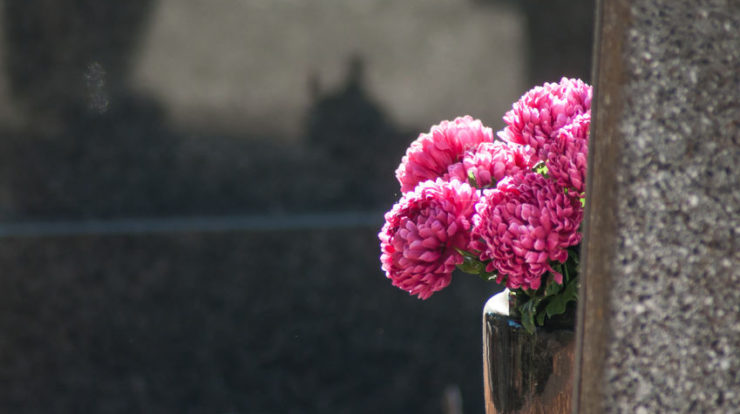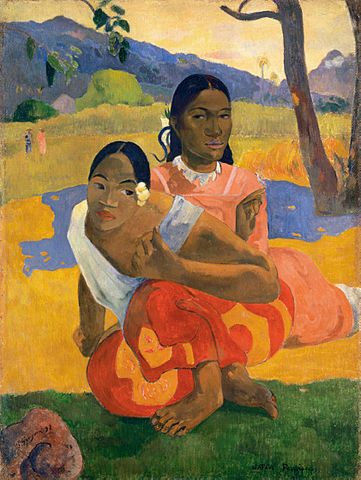[ad_1]

There’s an old, morbid joke that in order for an artist to see a significant increase in the value of her work, all she has to do is die. Underlying this dark humour is a deep-seated belief among the public at large, and among some artists, that once an artist passes away, their work will invariably increase in value.

This belief is based on a limited understanding of how the deceased-artist art market works, and on some limited examples where the value of deceased artists’ art has indeed increased dramatically post-mortem. All one has to do is peruse recent auction records to see examples of sales of work by deceased artists for tens, or even hundreds of millions of dollars to have this idea reinforced.
Unfortunately, in most cases, a false correlation is being drawn. The artwork isn’t selling at elevated prices solely because the artist is deceased. The art is selling because there is high demand for the work. The artist’s demise is a factor, sure – the supply of the work is now limited to existing work, and if the demand is higher than that supply, prices will rise – but dying won’t, on its own, increase demand for the art.
Our misperception of how the market works is driven by the fact that we only hear about the cases where the value of the work skyrockets. We’re unlikely to read a headline that says, “Artist Dies, Artwork Continues to Sell at About the Same Price it did When the Artist was Alive.” Ultimately, this headline would likely be more universally applicable.
I recently received an email from a RedDot reader on this subject.
My good friend and painting-buddy passed away of a severe form of leukemia. I’ve painted alongside him for almost eight years. He fought the cancer for two years. He was a prolific plein air painter and produced countless pieces over the years. He told his wife he’d like me to curate his work. Now that the emotional dust has begun to settle, his wife and I are getting ready to dig in to the project. I’ve never done this before. I chatted with a friend of mine who gave me some thoughts on organizing such a project. I wondered if you might have some advice for me. With such a large task, I’d like to be thorough the first time through. [My friend] advised to note the date, medium, location where the painting was done, price, and include [the artist’s] narrative which almost always was included with his paintings. During his last 6 months or so, he posted a painting/day on Facebook and wrote detailed narratives to accompany each painting.
The next question has to do with potential posthumous sales. [The artist’s wife] is of the mind that reserving his paintings will result in their increase in value. The money to be gained isn’t her motive, but rather reinforcing or enhancing the current value. Is it always the case that the art of a deceased artist increases in value? Might it be wise to release some for sale in batches from time to time as opposed to just sitting on the collection. Is there an optimal period of time before such artwork should be made available to the public for purchase?
My reply:
First allow me to say that I’m sorry to hear of your loss – it sounds like [the artist] was a great mentor and friend.
Cataloguing and inventorying all of the work is a good way to begin. I might suggest that in addition to all of the items you mentioned, it would also be a good idea to index the subject-matter of each piece so that you can easily cross-reference and group the work.
How well known was [the artist]? Did he show in galleries? How many collectors had bought his work over the years? All of these factors will play in to how the work values posthumously. Unless an artist is widely collected and the work is in high demand at the time of death, it’s unlikely that there would be a big bump in value. For high-demand artists the bump comes because the supply is suddenly cut off but the demand is strong. For most other artists, passing has very little impact on demand, but it can decrease the likelihood that a gallery would be interested in showing the artist’s work if they weren’t already doing so.
Was Bob represented by galleries? Where would you be trying to market the work?
I haven’t yet received a reply to the questions I raised, but I think you can see where I’m going with the questions. I do think that regulating the release of new work is a good idea if there is a network of galleries in place with the ability to market the work, and a collector base established to create the demand.
I’ve seen instances where the value actually decreases because the artist’s estate and existing collectors flood the market immediately after the death of an artist.
The greater difficulty comes if there wasn’t much existing demand for the artist’s work. It is exceedingly difficult to create a market for an artist who is no longer producing. Buyers have no reason to expect that demand that wasn’t there during the artist’s lifetime will suddenly materialize upon his death.
Some Tips for Making an Artist’s Passing Easier on the Family and Estate
For all of the reasons listed above, it’s critical that an artist work to sell as much of his or her work while still alive. I would also argue that you will enjoy the sales more while you are alive 😉
In addition to actively promoting your work and building an audience, I would recommend doing the following in preparation for your passing.
- Keep an accurate and complete inventory of your work, including photos, dimensions and descriptions.
- Include your wishes for the disposition of your artwork after your passing in your will. Include detailed information about any bequests of specific works.
- Discuss with an estate/tax planner the financial implications of the transfer of ownership of your work on your passing. Passing your art on to family members or others can incur a significant tax liability for the beneficiaries. The IRS may try to tax the value of your work at its full retail value, a potential disaster for your family.
What Do You Think?
Have you had the chance to see what happens to the value of an artist’s work upon the artist’s death? Do you have plans in place regarding the disposition of your work when you pass? What would you recommend to the artist who wrote me, or to family that’s trying to decide what to do with a deceased artist’s work? Please share your experience and thoughts in the comments below.
[ad_2]
Source link


:strip_icc()/BHG_PTSN19720-33d9cd22f6ab49e6a21982e451321898.jpg)

More Stories
BSA Film Friday: 11.25.22 | Brooklyn Street Art
FEATURES – Art in VR with Casey Koyczan
Julie Karpodini: Painting Instinct – Jackson’s Art Blog